Oil prices rebound sharply on smaller-than-feared OPEC+ output hike
Introduction & Market Context
Gladstone Commercial (NASDAQ:GOOD) Corporation (Nasdaq:GOOD) released its Q2 2025 supplemental financial information, highlighting the company’s continued strategic shift toward industrial properties amid a challenging commercial real estate environment. The REIT, which invests in single-tenant and anchored multi-tenant net-leased assets, reported solid financial performance while maintaining high occupancy rates across its diversified portfolio.
Trading at $13.06 as of August 6, 2025, Gladstone’s stock has experienced a 1.28% decline, reflecting broader market uncertainty in the commercial real estate sector. However, the company’s focus on industrial properties and long-term leases with credit-worthy tenants appears to be providing stability in a volatile market.
Quarterly Performance Highlights
Gladstone Commercial reported Funds from Operations (FFO) of $15.4 million ($0.33 per diluted share) and Core FFO of $16.1 million ($0.35 per diluted share) for Q2 2025. The company maintained its monthly common stock dividend of $0.10 per share, resulting in quarterly distributions of $0.30 per share or $1.20 annualized.
Total (EPA:TTEF) operating revenues reached $39.5 million for the quarter, representing a sequential increase from the $37.5 million reported in Q1 2025. This growth aligns with the company’s acquisition strategy and portfolio expansion.
As shown in the quarterly highlights, Gladstone completed significant industrial property acquisitions during the period:

The company’s portfolio maintained an impressive 98.7% occupancy rate across its 17.0 million square feet of real estate, demonstrating strong tenant retention and property management capabilities. With an average remaining lease term of 7.1 years and only 1.3% of annualized straight-line rents expiring through the end of 2025, Gladstone has positioned itself for stable near-term cash flows.
Portfolio Strategy and Acquisitions
Gladstone Commercial’s portfolio strategy continues to emphasize industrial properties, which now represent 67% of the company’s holdings, compared to 29% for office properties, 3% for retail, and 1% for medical office. This allocation reflects the company’s strategic pivot toward industrial real estate, which has shown stronger fundamentals than the office sector in recent years.
The portfolio diversification across property types and tenant industries is illustrated in the following chart:
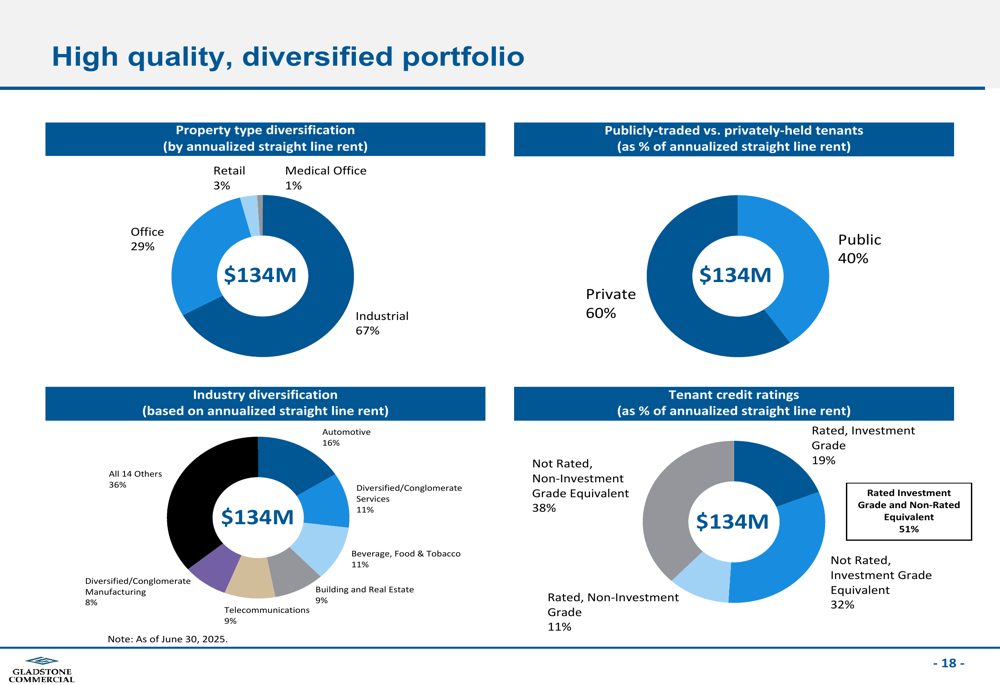
The company’s geographic diversification spans 27 states, with the largest concentrations in Texas (16.3%), Pennsylvania (13.1%), and Florida (10.1%). This broad geographic footprint helps mitigate regional economic risks while allowing the company to capitalize on growth in secondary markets.
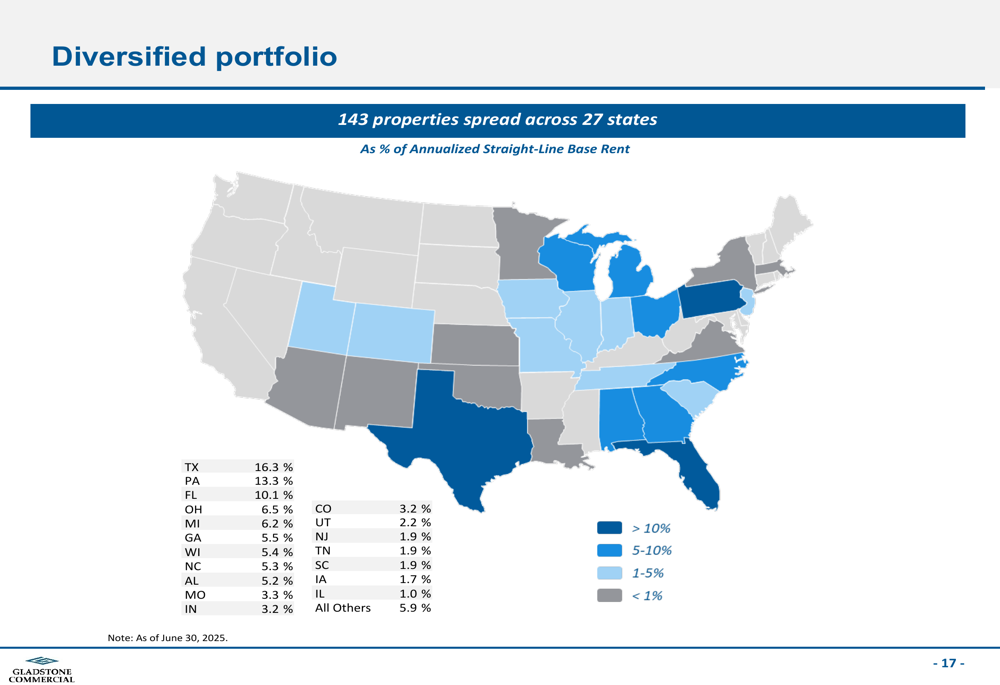
During Q2 2025, Gladstone made significant progress on its acquisition strategy, purchasing a 303,991 square foot industrial property in Germantown, Wisconsin for $62.7 million with a 19.4-year lease term, as well as a 215,102 square foot, three-property industrial portfolio in Harrison Township, Michigan for $16.3 million with a 10.0-year lease term. These acquisitions align with the company’s previously stated goal of $70 million in acquisitions for Q2, which it has now exceeded.
Financial Position and Capital Structure
Gladstone Commercial maintains a balanced capital structure with total assets of $1.21 billion as of June 30, 2025. The company’s debt profile shows a prudent approach to leverage, with a net total debt to enterprise value ratio of 47.4% and a weighted average interest rate on mortgage debt of just 4.22%.
The company’s capital structure breakdown is illustrated in the following chart:
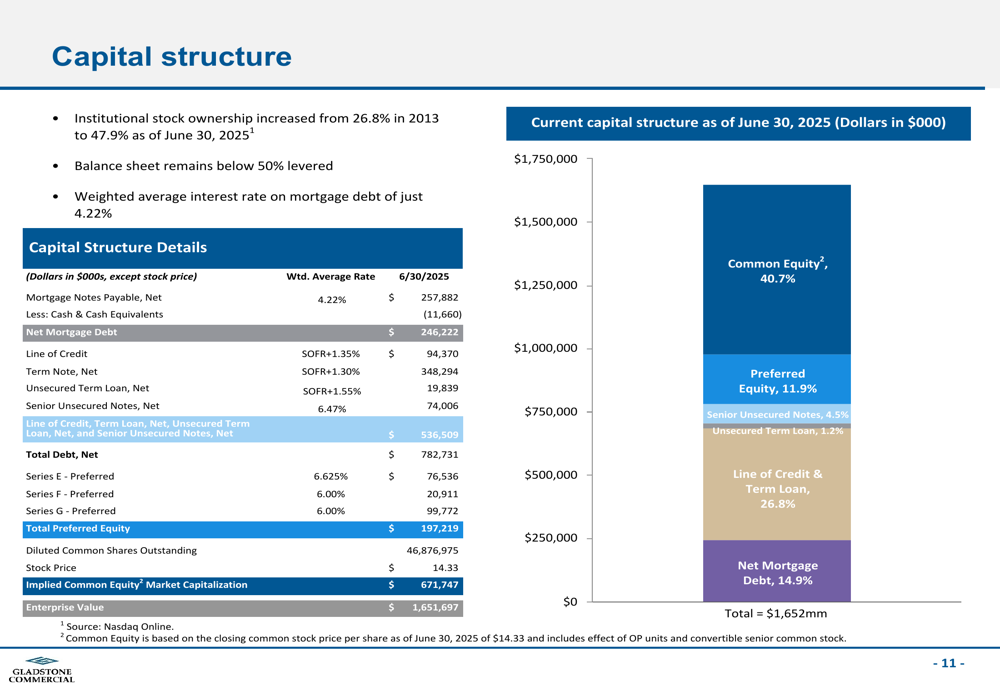
Gladstone’s debt is well-structured with a mix of fixed rate (42%), hedged floating rate (39%), and floating rate (19%) components, providing protection against interest rate volatility while maintaining flexibility. The company reported total liquidity of $38.7 million, consisting of $11.7 million in cash and $27.0 million available under its revolving credit facility.
The company’s covenant compliance remains strong, with all key metrics well within required thresholds:
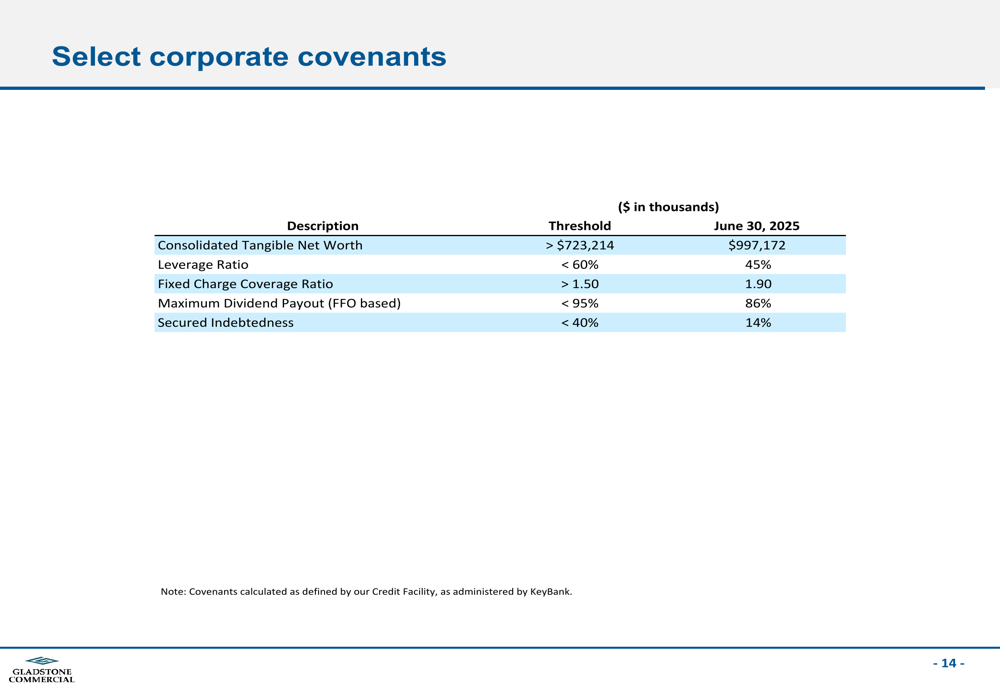
During the quarter, Gladstone issued common stock through its ATM program for net proceeds of $10.4 million and issued Series F preferred stock for net proceeds of $0.1 million, demonstrating continued access to capital markets.
Forward Outlook
Gladstone Commercial’s portfolio is well-positioned for stable performance in the near term, with a smooth lease rollover schedule that minimizes immediate re-leasing risk. Only 1.3% of the company’s annualized straight-line rent is set to expire through the end of 2025, providing cash flow visibility.
The company’s lease expiration schedule is detailed in the following chart:
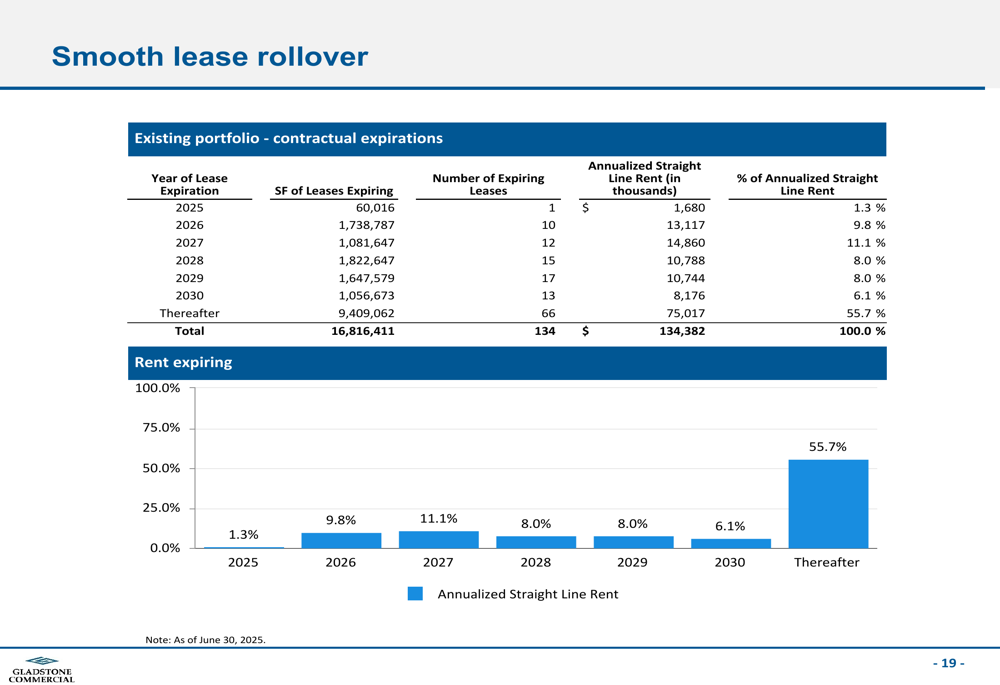
With institutional ownership increasing from 26.8% in 2013 to 47.9% as of June 30, 2025, Gladstone has broadened its investor base, potentially improving stock liquidity and market recognition. The company’s strategic focus on industrial properties, tenant diversification, and conservative financial management provides a foundation for navigating the evolving commercial real estate landscape.
Following its successful Q1 2025 performance, where the company exceeded both EPS and revenue forecasts, Gladstone appears to be maintaining momentum with its Q2 results. The continued execution of its industrial-focused acquisition strategy, combined with high occupancy rates and stable cash flows, suggests the company is effectively implementing its long-term vision despite broader market challenges in the commercial real estate sector.
Full presentation:
This article was generated with the support of AI and reviewed by an editor. For more information see our T&C.
